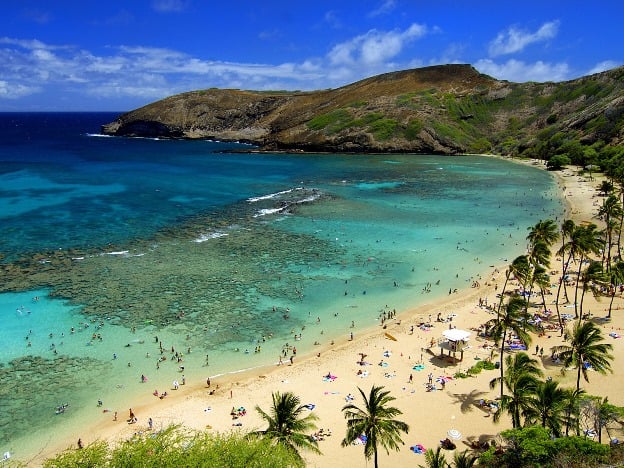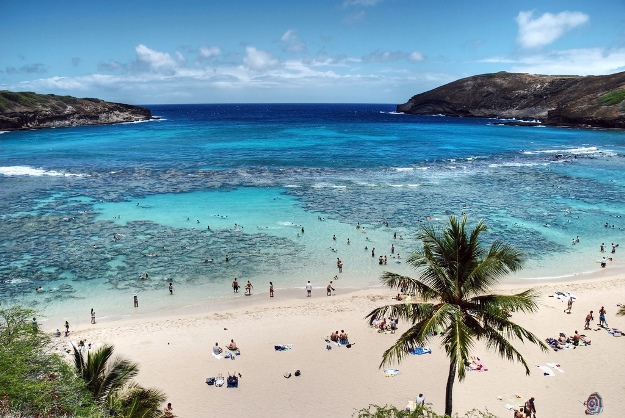For a first-time snorkeler in tropical waters, it might seem like a psychedelic dream: a cloud of black-masked raccoon butterfly fish in brilliant yellow flitters by, followed by a swarm of black-and-white Hawaiian damselfish hovering close to their favorite coral head, while parrot fish in green, yellow and orange dart in and out. Welcome to Oahu’s most popular snorkelling spot, Hanauma Bay Nature Preserve, with its picture-perfect 2,000-foot crescent-shaped beach bordered by palm trees.

Once a volcanic crater, now breached by the sea, Hanauma used to be the exclusive beach of the royal families and the place where the sport of uma (hand wrestling) was performed, but today, visitors arrive every day by the thousands.
They’re drawn by the gorgeous white-sand beach, shallow water near the shoreline and more than 100 different species of abundant marine life. Fish identification charts sold in local shops will help the uninitiated identify the hawk, surgeon, trigger, file, puffer, trunk and other fish living in these calm, warm waters.
Most snorkelers explore close to shore, in the safe 10-foot-deep inner bay, which is almost always crowded. Serious scuba divers go further out, shooting ‘the slot’ through the reef’s edge to get to turbulent Witches’. Brew cove and braving strong currents in 70-foot depths at the bay mouth to see coral gardens, turtles and sharks.

Hanauma Bay is a conservation district, so you cannot touch, take or feed any marine life here. Before putting a toe in the water, visitors are guided through the $13 million , 10,000-square-foot Marine Education Center, which houses a variety of marine exhibits and a seven-minute orientation video about the Marine Life Sanctuary. Rent flippers masks and snorkeling equipment at the beach, then jump in and enjoy the underwater wonder of it all.
Hanauma Bay sees on average 3000 visitors a day, or around one million visitors per year. The vast majority are tourists, but locals love this beach as well. The bay is closed to the public every Tuesday, Christmas Day and New Years Day to allow the fish a day of feeding without interruption.
